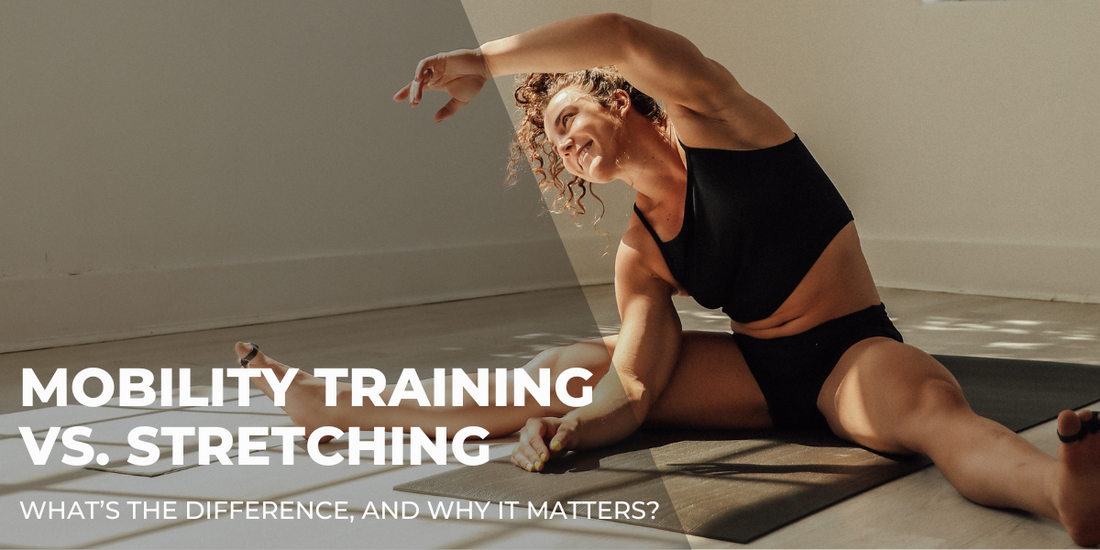
Mobility Training vs. Stretching: What’s the Difference, and Why It Matters?

When it comes to improving movement and reducing stiffness, people often use "mobility training" and "stretching" interchangeably. While they share similarities, they serve distinct purposes and offer unique benefits. Understanding the differences can help you make the most of your workout routine, improve functional movement, and reduce the risk of injury.
In this post, we’ll break down mobility training versus stretching, discuss their benefits and limitations, and share examples of each so you can incorporate both effectively.
What Is Stretching?
Stretching involves lengthening a muscle to improve flexibility. Typically, it focuses on static positions held for a certain duration to relax and elongate muscles. Stretching is often used:
- To relieve tension in tight muscles
- To cool down after exercise
- To enhance range of motion temporarily
While stretching can help with flexibility, it doesn’t actively improve joint strength, control, or movement patterns. A static stretch can increase the range of motion in the short term, but without strengthening or engaging muscles within that range, the benefits may not translate to functional movement.
What Is Mobility Training?
Mobility training goes beyond flexibility, focusing on the active control of a joint through its full range of motion. It combines strength, control, and flexibility to ensure your body moves efficiently and safely. Mobility exercises often mimic natural movement patterns, making them highly functional.
Mobility work benefits:
- Improves joint health by lubricating joints and strengthening surrounding muscles
- Enhances movement quality and performance in daily life or sports
- Helps prevent injuries by building control and stability in a joint’s end range
Key Differences Between Stretching and Mobility Training
| Aspect | Stretching | Mobility Training |
|---|---|---|
| Focus | Muscle flexibility | Joint control, strength, and range of motion |
| Movement Type | Often static | Often dynamic |
| Goal | Temporary muscle elongation | Functional, long-lasting improvements in movement |
| Use | Post-exercise cooldown or relaxation | Warm-ups, performance enhancement, and injury prevention |
Benefits of Both
Both stretching and mobility work have a place in a balanced fitness routine. Stretching helps relieve muscle tightness and prepares the body for relaxation, while mobility training enhances movement patterns and supports long-term joint health.
Examples: Mobility vs. Stretching Exercises
Check this reel to watch a quick video on mobility vs stretch movements!
Finding the Right Balance
Incorporating both mobility work and stretching into your routine ensures your body has the flexibility, strength, and control it needs. While stretching can help you unwind and temporarily increase range of motion, mobility training equips you with lasting movement quality that benefits your daily activities, sports performance, and overall health.
Take Action: Improve Your Mobility Today!
Ready to take your movement to the next level? Incorporate mobility tools like the Spacer Mobility Rock Mat into your routine to stimulate foot nerve endings, improve stability, and enhance your overall movement quality. Visit our shop to explore tools that support your journey to better mobility and functional fitness.
Now through November 30, 2024 take advantage of our Black Friday Promo and to save BIG! Every item on our site is on SALE at least 25% off! Discount automatically applied at checkout. Shop Black Friday Now.
